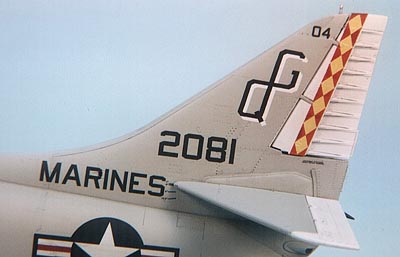1⁄35Making Custom Decals

Step 1b: Test Print
I test print the master image on standard laser paper to judge its size,
details, colors (on a color image), etc... I list this step as Step 1b because I
usually am test printing the images all through their creation to verify the
details as I go.
MS Paint is rather simplistic in its print capabilities. To better control the
scaling of the image, I use another product, MS Word. Now you are thinking
"Huh? Did he write MS Word?" Yes, MS Word. I imbed the GIF images into MS Word
and use the properties of the image (found by right clicking the image) to
control its size. The image size I prefer working in most has me reduce the
image to 16% of its original size. If I need bigger or smaller images, I can
step this up or down by 1% increments to achieve the print size I need.
The MS Word scaling provides another benefit. By changing the scaling in MS
Word, I can achieve multiple scales of markings by just changing the percentage
of reduction. If 1/48th scale is a 18% reduction (for example), then 1/72nd
scale is a 12% reduction and 1/32nd scale is a 27% reduction -- all using the
exact same image file. Nice, huh?
Step 2: Color Separation
This step relates only to color images. For black and white images, I skip to
Step 3.
Color printing on an ALPS is tricky business to get the images to come out just
right so they work as decals on a model. It requires separating the master image
into component images where each component prints a different part of the whole
master image.
The colors printed from the ALPS printer are not opaque. To resolve this, it is
necessary to print a white undercoat under the color portions of the master
image. Thus, they are not as effected by whatever color the model is painted in
the areas that the decals get applied. The ALPS printer is the only printer
available that can print the color white.








